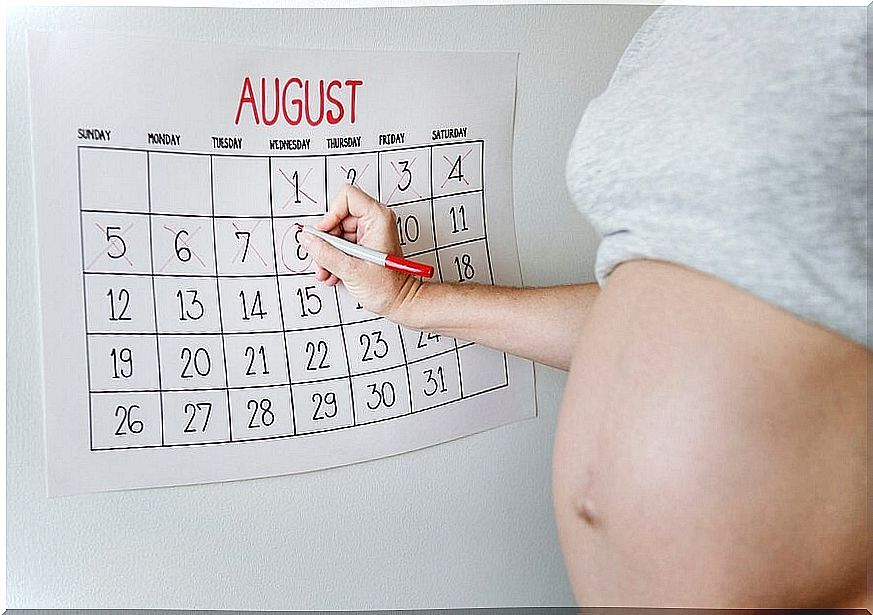Different Methods For Calculating Your Date Of Birth

When a woman first finds out she’s pregnant, one of the top questions is when the birth will be. There are several ways to calculate one’s date of birth using mathematical formulas and medical tables.
Regardless of the methodology used, it is important that the woman knows when she had her last period. The woman’s fertility cycle can help identify the moment when conception probably occurred. You can calculate it with the first day of the menstrual cycle.
After 14 days, the egg is most fertile. It is at that moment that it has the greatest chance of being able to conceive. The period lasts for 2-3 days.
Two common methods for calculating the date of birth are with Naegele’s rule and the medical rule.
The first consists of a mathematical formula from the last menstrual date. From there you subtract three months and add seven days.
If we give an example with real dates, we can think that if the menstrual cycle occurred on May 11, the possible delivery date will be February 18.
In the case of the medical calendar, it can be illustrated as a wheel or a table, and it is very common in doctor’s surgeries.
In the table, the left column indicates the last menstrual period and the upper row the days. Between the months and the day, there is a line indicating possible delivery dates.
You can find other methods for calculating the date of birth on the internet; There are many digital calculators that work very well. In all, the common denominator is that you have to keep track of when your last period was.
However, only 10% of all women actually give birth on the dates indicated by these calculators, so take them with a pinch of salt.

A pregnancy is considered complete when the baby is born between weeks 38 and 42, so giving an approximate date is important to be able to keep track of the weeks. The goal of providing this information is also mainly for the mother to be able to prepare physically and psychologically, and for her to be able to prepare everything required for the baby’s arrival in good time.
The truth is that the date of birth can vary by up to two weeks. Depending on the type of pregnancy and the mother’s circumstances , doctors sometimes avoid giving specific dates. They usually state the probable month, but rarely give specific days.
The decision can be made if the mother is very anxious or has blood pressure problems due to emotional changes.
Many specialists wait to see the results of the ultrasound in week 12 before setting a date. During the ultrasound, they pay attention to the baby’s measurements and development, and these values as well as the mother’s age lead to more accurate dates.

The ultrasound in week 12 also allows specialists to identify abnormalities in the fetus. Between 60 and 70% of all genetic malformations and congenital anomalies can be identified then. Down syndrome is one of them, and so are problems related to the heart and blood vessels.
Another benefit of undergoing an ultrasound in week 12 is that doctors can identify if more babies are on the way. They can also find out the pelvic capacity of the mother before the birth. The results from the ultrasound may even reveal some medical complications.
The possible date of birth allows future parents to adapt their home and their routines before the baby’s arrival. The important thing to remember is that the date is quite flexible; No matter how much analysis specialists perform, it will not be possible to predict the exact date.









